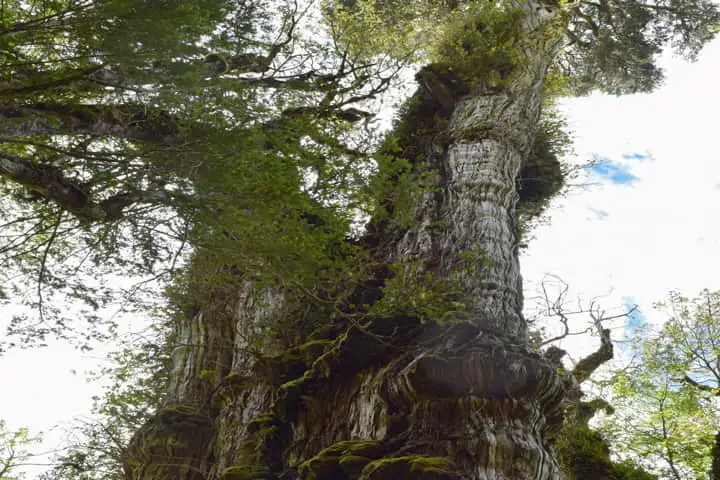The world’s oldest tree located in the Chilean Andes may be mute but is witness to history of thousands of years. The ancient alerce is called “Gran Abuelo” or great grandfather whose age has been calculated to be 5,400 years by a new computer model, states a report in sciencealert.com.
On the confirmation of its age, this coniferous tree will be 600 years older to the one which is the official record holder – the Great Basin bristlecone pine called “Methuselah” in California.
The real age of the tree is disputed since its dendrochronology is incomplete. This method analyses the rings of the tree and is considered as the gold standard for determining the age. The data for the model has neither been given to a peer-reviewed journal nor released in the public domain.
According to the researcher who created the model, Jonathan Barichivich, irrespective of the age, this ancient tree is in danger and needs protection. Barichivich is a climate and global ecology scientist at Paris’ Climate and Environmental Sciences Laboratory.
Highlighting this aspect, Barichivich told Live Science: "It's really in poor condition because of tourism.” Change in climate too is posing danger to it.
The conifer Gran Abuelo in Chile’s Alerce Costero National Park is 196 feet in height and initially it was thought to be 3,500 years old. Barichivich said that the age was never studied systematically and that is what he intended. "We wanted to tell the story of the tree with the only aim to valorize it and protect it," he said.
Along with his colleague Antonio Lara who is a professor of forestry and natural resources at Chile’s Austral University, Barichivich in 2020 made use of a non-destructive technique to drill a tiny core from the tree and capture tree rings that were worth 2,465 years. However, the borer was not able to reach the centre of the tree – which has a 13-foot diameter — thus many of the growth rings could not be taken into account.
In order to calculate those remaining years, a mathematical model was developed taking into account how this particular species of trees — F. cupressoides — grows at different rates from the stage of sapling to a mature tree. To make the model authentic, growth rate variations were introduced which were based on fluctuations and competition in climate and environment.
The model developed simulated the tree’s growth 10,000 times to arrive at a range of predicted ages for this conifer tree.
The most likely age which the model pointed was 5,400 years while 6,000 years could be the absolute oldest it can be. There was an 80 per cent chance that the tree was older than 5,000 years and all of the simulated growth trajectories put its age 4,100 years at least.
Barichivich noted: "Even if the tree was a very fast grower, for all that size, it cannot be younger than that.”
Another crucial aspect to be taken into account is the growth-lifespan trade-off which states that those species which grow slowly tend to live longer. Alerce trees grow incredibly slowly and this is slower than other long-lived species like giant sequoias or Great Basin bristlecone pines, Barichivich said.
Some tree-dating experts have expressed their reluctance to use modelling data to estimate a tree's age. For them dendrochronological counting of the rings is the only way.
Going beyond the age, Barichivich is concerned about the future of this tree.
A narrow platform walkway around the tree is harming its living roots and every time tourists walk on it they affect the tree. Besides change in climate and a 10-year drought too has its effect.
To shield the tree from these dangers, Barichivich and his colleagues have proposed putting a veil of netting 10 feet high around the tree. This will not allow people to get close to it while also moving the walkway away from the tree’s ancient root system.




















